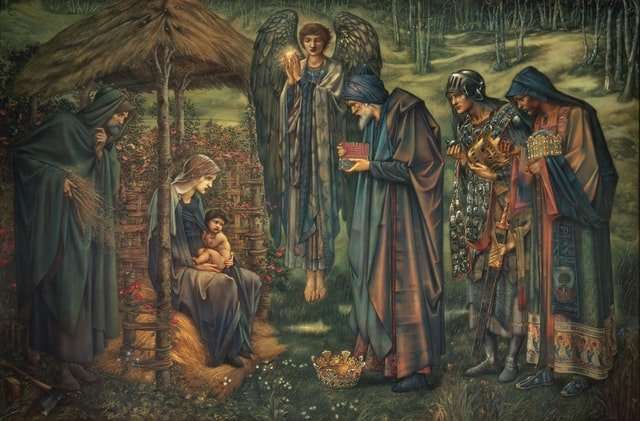Abstract art is a form of art that uses visual elements and principles of design, but does not depict or suggest any specific thing. It may be figurative and abstract.
It may also be non-objective, nonrepresentational, and non-figurative. The word abstract implies something beyond the basic shape or form of objects. It often refers to an intellectual process where the essential characteristics of a subject are extracted in order to reveal its essential structure or organization.
Artists who create abstract art do not have to reject representational art, though many do. Some abstract artists may use familiar iconography and techniques (such as cross hatching or even some aspects of modern portrait painting) to suggest a particular atmosphere or mood. Abstract art conveys meaning through different means than figurative work; although it may still use recognizable forms, the overall result is more subtle, intellectual, ambiguous and open-ended than a literal portrayal of objects would be.
Towards the turn of the 20th century, artists began to move towards abstraction: Matisse and Picasso were two early pioneers of this movement in art and several others took up their ideas and developed them further. In the late 1920s Surrealist artists such as Max Ernst brought this style into their work
Abstract art is a term used to describe “non-representational” art. The word abstract comes from the Latin abstrahere which means, “to draw away or withdraw.” In general, abstract art refers to the movement begun in the early 20th century, in reaction to some of the more realistic styles of painting that preceded it. It may also be used to describe art that is non-representational.
In the history of art, abstraction can be seen as a gradual process whereby the content of a painting becomes less important than its form; although it is rather difficult to point out what the exact beginning of this process is. Art has been created and will continue to be created with fewer and fewer references to reality; but at some point we stop seeing something as being abstract and start seeing it as being figurative or representational.
These pieces contain elements of both representational and non-representational images; however, they can be described as being mostly abstract because they lack any real reference to physical objects.
They were created using a variety of methods: 3d modeling software, digital painting tools, and simple pencil and paint sketches. Some are intentionally unfinished; which adds an element of mystery.
This collection contains over twenty different pieces from various artists who create
Abstract art is a type of art that attempts to communicate an idea, feeling, or message through visual elements such as line, shape, color, texture, and form.
Abstract art often focuses on communicating emotions, ideas, and feelings rather than reproducing objective reality.
In other words abstract art is a visual or plastic art that does not attempt to represent images of objects or people. It may represent an idea or emotion without depicting any specific object; it may also use geometric shapes and patterns instead of recognizable form. It is characterized by brushstrokes or strokes of paint visible as marks on the canvas; color and texture are subordinate to composition.
Modern painting is generally considered abstract if it is not realistic. It can be figurative (representing people or objects), non-figurative (representing only emotions) or both figurative and non-figurative simultaneously. But in the West just about all paintings until the mid 19th century were representational.
Abstract art is a modern art that abstracts the representation of a subject by means of visual symbols. The subject is typically an object, but it may be abstract as well.
Abstract art often intends to communicate emotions or ideas, though some abstract artists have explicitly rejected this notion and insisted their work be understood purely on its visual terms.
Abstract art is often figurative and non-representational, as in lyrical abstraction, but most other types of abstract art are not.
There are different styles and movements that contribute to abstract art such as geometric abstraction and conceptual art.
Abstract art is a style of painting in which the artists’ intention is to express emotions or ideas rather than specific objects.**
Abstract art can be seen as a reaction against Impressionism. Whereas Monet and Renoir took everyday scenes and painted them in a style that made you feel like you were actually there, modern abstract painters tried to create paintings that made you think about what it means to be alive.
The two most popular forms of abstract painting are Cubism and Surrealism. In both of these, the artist attempts to represent how he or she sees the world, rather than how it really looks. The goal is to depict the world in an interesting, thought-provoking way.
Tachisme** was another abstract movement from the early 20th century. It was similar to Abstract Expressionism, except that it tended to use bright colors.
Kandinsky** was a leader of this movement, which also included other famous painters such as Mondrian.*
Abstract art hasn’t been very popular since the 1950s, when Pop Art took over the spotlight.* Art critics have suggested that abstract art is too difficult for most people to understand. However, some contemporary artists continue to explore new ways of creating abstract art.**
Abstract art is a modern art movement that has no clear definition. This is because the word abstract can be used in two ways: to mean that something is vague and unclear, or to mean that something is more strictly defined than the other forms of art.
The first meaning is fairly straightforward, but the second meaning requires further explanation. Abstract artists all have a shared set of values that distinguish them from traditional painters. These values include a belief in the role of intuition and imagination in making art, and an opposition to objective realism and didacticism. They believe instead in a subjective aesthetic experience, one which may not even be based on visual concepts at all.
The movement began in Europe during the early 20th century, at first as an offshoot of Fauvism, Cubism and Futurism. Among its leading proponents are Wassily Kandinsky and Piet Mondrian.
Abstract art is a form of art that uses a visual language of shape, form, color and line to create a composition which may exist with a degree of independence from visual references in the world. Western art had been, from the Renaissance up to the middle of the 19th century, underpinned by the logic of perspective and an attempt to reproduce an illusion of visible reality. The arts of cultures other than the European had become accessible and showed alternative ways of describing visual experience to the artist. By the end of the 19th century many artists felt a need to create a new kind of art which would encompass the fundamental changes taking place in technology, science and philosophy.
Artists such as Paul Gauguin, Pablo Picasso, Henri Matisse, Georges Braque, Kurt Schwitters and others broke away from representational painting, and began work that was self-referential, in other words abstract. The sources from which individual artists drew their theoretical arguments were diverse: both from within the European artistic tradition (from Manet and Cezanne for example) and outside it (the ideas of African sculpture).



